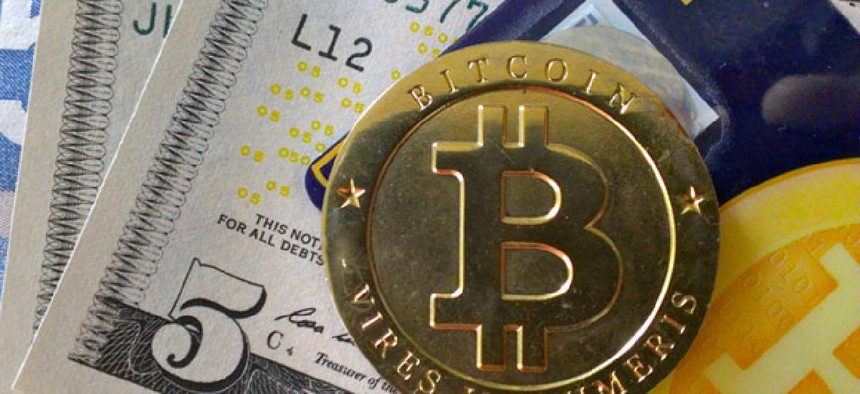Bitcoin Crash Shows Why It's Not Really a Currency

Flickr user zcopley
The system encourages hoarding, which is not a great thing for an economy.
After enjoying a week or so of increasing value, Bitcoin took a huge dive today, which explains why the "virtual currency" is not a currency at all, but more of a stock people have invested in to get rich. The coins started out at a high of $266 Wednesday, and have fallen to around $150, as a dramatic chart from Business Insider shows.
Currencies are allowed to lose value over time. That happens. But Bitcoin is designed specifically such that it will have these kinds of rises and falls all the time. And for that reason, the majority of people are using it more like an investment than a way to buy things.
The system encourages hoarding, which is not a great thing for an economy. This is happening for a couple of reasons. First, there will one day be a finite number of coins. The system will cap out around 21 million, currently there are something like 11 million in circulation. When there is only a certain number of a valuable commodity, people don't want to spend it. This hoarding causes instability, as Pascal-Emmanuel Gobry explained over at Forbes. He compares it to a babysitting co-op Paul Krugman once wrote a column about in The New York Times:
A problem arose when people tried to hoard coupons to build a reserve and then run it down. The more people tried to hoard coupons, the less people were willing to go out and get their babies sat. And since there were less coupons in circulation, there were less babies sat. The baby co-op, in other words, had entered a recession.
It's kind of how, back in 2009, people in Argentina held onto their pocket change out of fear for their credit system.
Read the rest of this article at TheAtlanticWire.com.
(Image via Flickr user zcopley)
NEXT STORY: PC Sales Drop by Greatest Margin Ever


